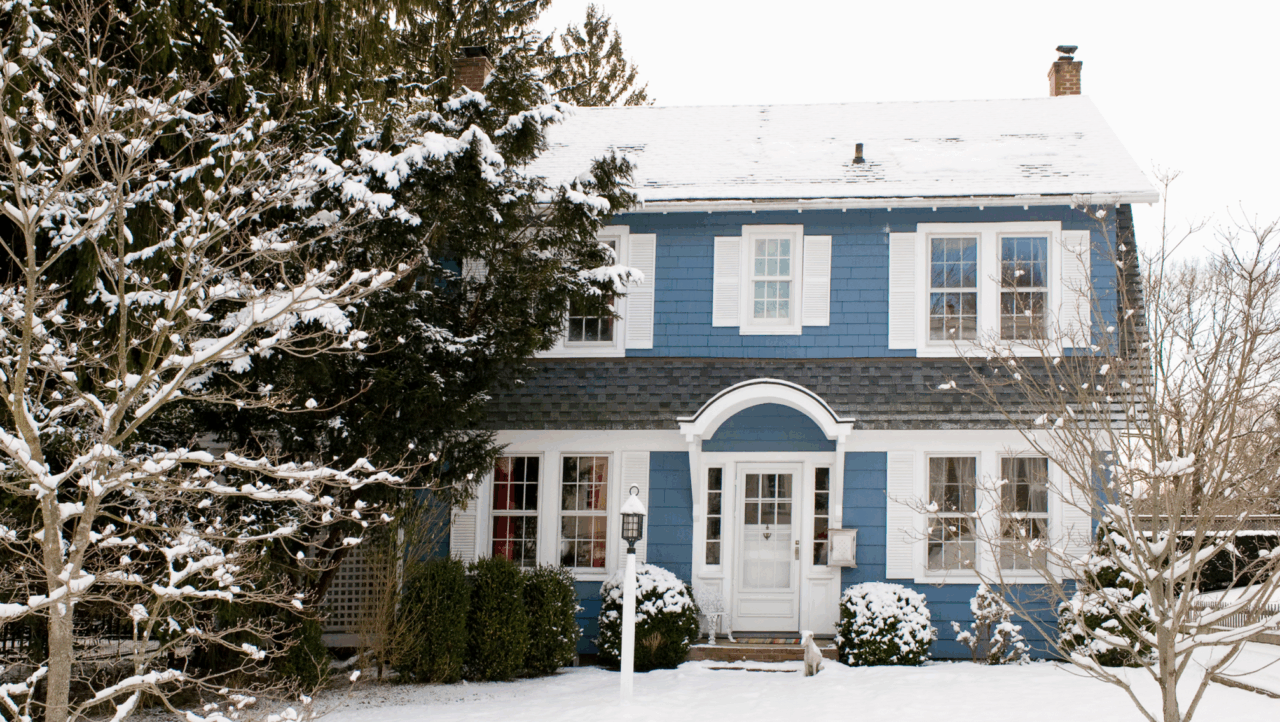Can I Use My 401(k) to Buy a House?


Written by Alycia Lucio on November 9, 2024
Reviewed by Neil Swanson
As home values continue to grow, home buyers are looking for new ways to afford a home, including tapping into their 401(k) retirement savings. If you’re thinking of borrowing against your 401(k) to help buy a house or make a down payment, you should be aware of the trade-offs for doing so.
To help you decide whether using your 401(K) to buy a home is a good option, let’s take a quick look at how you can use your 401(k) to buy a house, and how you can withdraw from a 401(k) without penalty.
What is a 401(k)?
A 401(k) is a type of savings account designed to help you prepare for retirement. If elected, a portion of your income goes into the account as an investment contribution that grows over time. You can have either a traditional 401(k) or a Roth 401(k), with the primary difference being how taxes are applied. Traditional 401(k) contributions are made pre-tax using your gross income; Roth 401(k) contributions use your net income, meaning they’re taxed upfront.
With a traditional 401(k), you can withdraw your money anytime, but early withdrawals before the age of 59 ½ will incur a 10% penalty charge in addition to income taxes on the withdrawal amount. With a Roth 401(k), the account must be at least five years old from your initial contribution date and you must be at least 59 1⁄2 to make a qualified withdrawal that allows you to avoid income tax on your earnings and penalty charges. Roth 401(k) withdrawals that do not meet this criteria are considered unqualified, and will incur a 10% penalty charge and income tax on the earnings portion of the withdrawal amount.
How to use your 401(k) to buy a house?
When it comes to using your 401(k) to buy a house, you have two options:
1. Apply for a 401(k) loan
Both traditional and Roth 401(k) loans allow you to borrow against the balance of your retirement account. The loan won’t count towards your debt-to-income ratio (DTI), won’t affect your credit score, and the amount you borrow is income tax-free.
The requirements for using a 401(k) loan to buy a house include:
- Employer approval, meaning that your employer must allow 401(k) loans in their benefits package.
- The maximum loan amount must be 50% of your vested balance or $50,000 (whichever is the lesser amount).
- If the maximum 50% loan amount is less than $10,000, you can borrow up to $10,000 if you’re specific 401(k) plan allows.
- You must repay the loan with interest according to current market rates plus 1%-2%. (The interest goes back into your 401(k).)
- You must agree to the repayment schedule set by your 401(k) provider, which is usually within five years of taking your loan.
- You cannot continue making 401(k) contributions until you repay the loan in full.
Some other things to remember when using a 401(k) loan to buy a home:
- If you leave or lose employment with an outstanding 401(k) loan, the repayment schedule will change, and the total amount will be due by that year’s tax filing deadline.
- If you do not repay the loan by its due date, your remaining balance becomes taxable income, subject to the 10% penalty charge.
2. Make a 401(k) withdrawal
Making a 401(k) withdrawal means taking money directly from your retirement account. Withdrawing from your 401(k) account early may cause you to incur a 10% penalty charge and income tax on the amount withdrawn unless you’re withdrawing under certain circumstances that qualify you for an exemption.
When can you withdraw from a 401(k) without penalty?
You can withdraw from your traditional 401(k) or Roth 401(k) account without penalty under the following circumstances:
- You have medical debt that exceeds a certain percentage of your adjusted gross income
- You have a permanent disability
- You have a court-ordered withdrawal to pay spousal support or dependent support
- You’re a service member on active duty
- You owe a debt to the IRS
- You’re at the retirement age of 59 ½ or in the case of the Roth 401(k), you must be of retirement age and the account must be at least five years old
- The account holder passes away, in which case their beneficiary may withdraw the money
Under the CARES Act of 2020, you can qualify to take money out of your 401(k) to buy a house and consider it a hardship. You can make a hardship withdrawal of up to $100,000 without paying the 10% early withdrawal penalty. It also grants you up to three years to pay the income tax on the money you withdraw.
To qualify for a hardship withdrawal to buy a house, you must prove that you have an immediate and dire financial need regarding buying a home. This may include:
- Proof of a lack of available assets to make a down payment
- Proof of eviction or foreclosure of your current residence
- Invoices for home-buying expenses, such as appraisals, inspections, renovations
- Your employer’s 401(k) plan must also allow 401(k) withdrawals for home purchases and define the hardship standards.
How much of my 401(k) can I use to buy a house?
When withdrawing from your 401(k) to buy a house, you’re taking out a loan. The maximum amount you can borrow is 50% of your vested balance or $50,000, whichever is less. You can use these funds to make a down payment on a house, pay closing costs or other fees that come with buying a home.
Should I use my 401(k) to buy a house?
Using a 401(k) to buy a home is more common than people realize. A 2024 Zillow Survey found that 24% of home buyers tapped into their retirement funds (like a 401k, 403b, and IRA) to help finance their down payment. While using your 401(k) to buy a house has a few advantages, such as receiving the funds quickly and enabling better loan terms, there are several things to consider before turning to your 401(k) to buy a house:
- The rules regarding 401(k) withdrawals, such as incurring penalty fees and income tax for early withdrawal.
- It will reduce your retirement savings, regardless of whether you choose to withdraw from or borrow against your 401(k) account.
- By taking out a 401(k) loan, interest will accrue on the amount borrowed, which is separate from the interest you’ll pay on your mortgage.
- By taking out a 401(k) loan, you won’t get to make any more contributions to your retirement until you repay the loan balance.
- There are repayment risks, such as job loss, which will force you to pay the balance in full within the same tax year.
- The money used to pay back a 401(k) loan is invested after tax, which means the borrower loses the tax deferral benefits of retirement plan savings and must pay taxes on the repayment and on the withdrawal of the funds in retirement.
- The money withdrawn from the 401(k) loses the earning potential from a person’s retirement account.
What are the alternatives to using your 401(k) to buy a home?
Delay your home purchase
Consider delaying your home purchase before borrowing from your 401(k) to buy a house. This will allow you to save more money for a down payment and continue to make valuable contributions to your retirement account.
Consider a 3% down conventional loan program
Eligible borrowers can qualify for one of several conventional loan programs offered by Fannie Mae and Freddie Mac. These programs typically require borrowers to have a 620 minimum credit score, a DTI of 50% or less, and a loan-to-value ratio (LTV) that does not exceed 97%.
The qualification requirements vary slightly by lender and loan program, but they enable borrowers to make a down payment as low as 3%.
Check if you're eligible for a government-backed loan
FHA loans and VA loans are government-backed loans that allow eligible borrowers to make low or no down payment. With an FHA loan, you can typically make a down payment of 3.5% — one of the lowest compared to non first-time homebuyer conventional loans. You’ll usually need a 580 credit score or higher to qualify for the lower down payment minimum. Some lenders may require a middle credit score of at least 620. VA loans are one of the few mortgage options that require no down payment, as long as you have full entitlement and you’re not borrowing more than the conforming loan limit for your area.
Borrow from a Roth IRA account
First-time homebuyers or anyone who has not purchased a primary residence within at least two years can withdraw up to $10,000 penalty-free from a Roth Individual Retirement Account (IRA) account. In fact, 21% of unretired households (and 15% of households with at least one retiree) in 2021 reported withdrawing from their Roth IRA account to make a home purchase, repair, or remodel. If the account is over five years old, it also will not be subject to taxes. However, if you take out more than $10,000 from your IRA account, you may incur a 10% penalty charge to the additional distribution amount.
Apply for down payment assistance
Down payment assistance is available to home buyers, especially first-timers, through grants, loans, vouchers, and more. In a 2023 Zillow survey, about one in three (37%) homebuyers reported getting at least one down payment assistance grant; 45% among first-time home buyers. The amount you can get ranges from thousands to tens of thousands of dollars, and it comes as one lump sum you don’t have to repay. Local and state housing authorities and non-profit organizations typically offer down payment assistance programs, and they’re compatible with all types of loans.
There’s more than one way to buy a house. See how much you pre-qualify to borrow with us at Zillow Home Loans*, and get expert guidance from our loan officers.
*An equal housing lender. NMLS #10287
Disclosure: This article is intended for educational purposes only. It is not intended to provide financial or legal advice, and consumers should seek consultation from professional financial and legal advisors regarding individual circumstances.
Tags
How much home can you afford?
At Zillow Home Loans, we can pre-qualify you in as little as 5 minutes, with no impact to your credit score.
Zillow Home Loans, NMLS # 10287. Equal Housing Lender
Get pre-qualifiedHow much home can you afford?
See what's in reach with low down payment options, no hidden fees and step-by-step guidance from us at
Zillow Home Loans.
Zillow Home Loans, NMLS # 10287. Equal Housing Lender
Calculate your BuyAbility℠
Related Articles
Get a mortgage with Zillow Home Loans
Go from dreaming to owning with low down payment options, competitive rates and no hidden fees. A dedicated loan officer will guide you until you have your keys in hand.

Zillow Home Loans, NMLS #10287. Equal Housing Lender.



